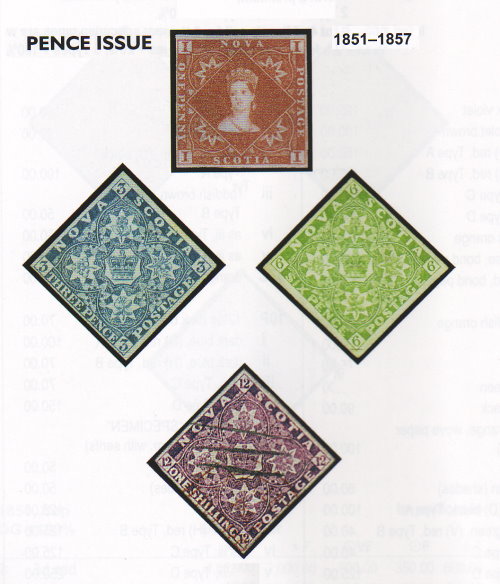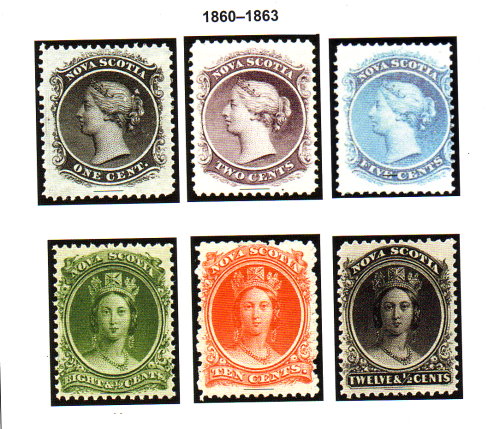
Book #3:
The Road To Being Canada (1815-1867)
Chapter 22, Communications
While the Voltaic battery first made its appearance earlier in the century, it was only possible in Britain, with the appearance of the Great Western Railway, to lay down a working electric telegraph line in 1838. Prior to the telegraph, people communicated over distances by writing letters and, in the nineteenth century, people wrote a vast number of letters. For those who wrote; quills, a penknife and blotting paper were usually at hand. As there were no postage stamps, letters were sent collect. A postal system was set up, first as a means to convey government correspondence. In 1828 a letter posted in Washington took eight days to reach New York.1 A national postal system such as was first started up in Canada, - as was the case for Britain and the United States - had no arrangements in the earlier days; and if you wanted to get a letter overseas, - well, you were on your own.
 The unfolding of the revolution in transportation, as the 19th century progressed, was indeed to be of great convenience to the traveling public; but this revolution also had a great impact on communications.
The unfolding of the revolution in transportation, as the 19th century progressed, was indeed to be of great convenience to the traveling public; but this revolution also had a great impact on communications.
Edith J. Morley:

"Postal, telegraphic, and lighting facilities were almost as revolutionary in their effects as improvements in means of travel. In the early volumes of correspondence there are frequent references to 'franks,' and to the cost entailed by the receipt of letters. Crabb Robinson himself makes a rule of writing to his friends only when he can obtain a frank, though for business purposes he is, of course, obliged to have recourse to ordinary methods. The thin folio or octavo paper and minute calligraphy used by him and his correspondents testify to the expense entailed on the recipients of letters when anything more than a single sheet was included, while the absence of envelopes explains why whole passages are often obliterated by the use of seals. Envelopes were introduced in May 1840, together with 'Queen's heads,' the name which Crabb Robinson almost invariably uses for stamps. Both followed five months after the establishment of prepaid penny postage. One remarks also the frequent use of travelers - by no means always personal acquaintances - as letter-carriers between friends. Similarly, the transport of parcels seems to entail considerable difficulty: thus, Wordsworth's publishers are frequently asked to enclose with packets of books all sorts of commissions, china, stationery, candles, which Crabb Robinson has executed in town for him or his household."2
Mail often came by way of Bermuda, particularly in winter when it was thought in England sailing vessels could not make Halifax on account of head winds in winter. News from England and from Europe therefore often came first to Bermuda.3
By 1840, Samuel Cunard had won a contract with the British Postal Service. He was to establish a reliable and regular schedule for the pickup and delivery of mail destined for North America. The first steamer of the four built for the job, the Britannia, was launched at Glasgow on February 5th, 1840. Her maiden voyage was between Liverpool and Halifax. She left on July 4th and arrived on July 17th. Up to this time, mail for the colonies was put on a packet which sailed from Falmouth (the "Falmouth Packet"). Liverpool was an up and rising shipping centre, and, being located on the western side of England, cut time away from the transatlantic passage.
The electric telegraph, by which, for more than 100 years, was the quickest way to get a message over the land and indeed in time over the seas, was but in its infancy when the years of the 1840s showed themselves. While there were experiments underway both in America and Europe prior to this year, it was in 1843 that Samuel Morse (1791-1872), the co-inventor of the Morse code, received funding so that his invention of a single-wire telegraph system might be put to a practical use. In that year the United States Congress appropriated $30,000 to aid Morse in the installation of a wire between Washington and Baltimore. In the spring of the following year, 1844, the first message "What Hath God Wrought?" passed over the circuit.4 In 1844, the first telegraph line in England was run between Paddington and Slough.5 In 1848, the Nova Scotian legislature passed an act "To establish a line [Electric Telegraph] from the Atlantic Shore to the St. Lawrence." On September 12th, 1851, the first telegraphic message was sent from Halifax to Quebec. As the years rolled by, wires over land, often in conjunction with the development of railway lines, were appearing in great numbers over increasingly longer distances.
There was for a short period of time a pony express in Nova Scotia. This was before there were lines for electric telegraph, news from Europe came byway of written letters sent overseas on one of the new steamships. A rider was waiting on shore at Halifax, ready for a fast run to Digby located on the Bay of Fundy. Horses were changed every twelve miles, riders at the halfway point of seventy miles.6 Halifax to Digby is 144 miles and the distance was covered by these riders in as little as eight hours, a speed which was much greater than a Cunard mail steamer could develop. At Digby a packet with steam-up rushed European dispatches across the Bay of Fundy, 40 miles, to Saint John which normally took three hours. At Saint John there was a telegraphic line that extended to Boston, so the news was tapped out at Saint John and instantly received at Boston. European news via "The Halifax Express" usually reached Boston 35 hours ahead of the trans-Atlantic steamer that had continued on from Halifax to Boston.7
Because of the problems in laying marine cable -- mostly on account of difficulty in getting the insulation right -- it did not come along until the 1850s. In 1851, the first undersea cable was laid between Calais and Dover.8 In turn, cables were laid so that Ireland was connected to London, and Newfoundland to New York. The last step was to lay a cable across the Atlantic. This last step was a frustrating and expensive one to take. Five attempts were made over a nine-year period from 1857 to 1866 when finally connections were achieved.9